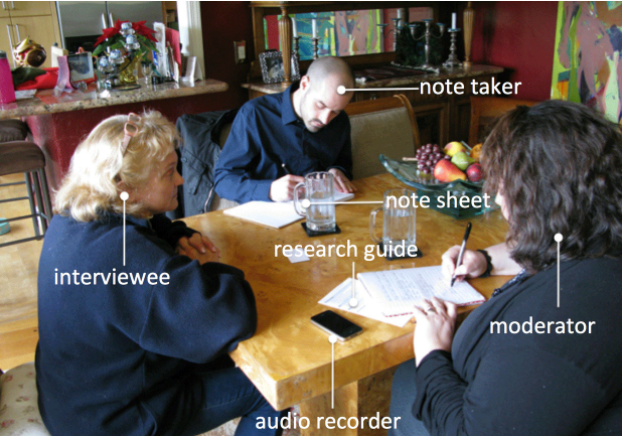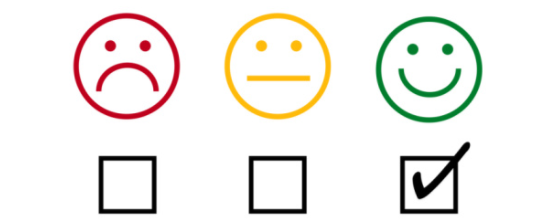
For the company, perhaps in the initial stage, all the human and financial resources will be devoted to developing a product. However, once the company is developed, it will basically embark on the path of multi-product development. The product manager will also have one or none of the leaders ) Into a few or even dozens. Multi-product does give the company more opportunities for growth but also brings more challenges. One of the challenges is the consistency of users’ perceptions of multi-product experience.
The pursuit of differentiation among multiple products is important, but its consistency of core user experience, more like product development DNA, determines the shape of each product. Once the DNA is absent, the product can easily become orphaned, giving the user a great deal of cognitive hassle. Unfortunately, this situation is not uncommon in reality, because the product manager or designer is not a person, and lack of information between each other, resulting in each product and other products are not related. This is also the original intention of writing this article, I hope we can give some inspiration.
Core experience model
To be consistent with the user experiences of other products, the product manager still plays a central role because he is not only the recipient of the information but also the creator of the information and the sender of the information. Precisely because of this, product managers first need to be done is to figure out, the company’s core product experience is what? Only by figuring out the core experience can we base ourselves on planning our own product. Here I put together a core experience model.
The core experience is composed of three parts: idea, advantage and temperament. The following is an explanation.
Idea
The idea means that the concept of the company to do the product. For example, we all know that the value of JD is more, faster, better, and more provincial. It is also based on this core concept, whether it is the PC version of JD, or the mobile version of Jingdong, or even the design of logistics, have followed this core concept.
I believe every company, especially Internet companies, will have such a core philosophy, product managers do is understand it and use it as the origin of planning products.
Advantage
On the advantages of “experience degree” this book gave me a deep understanding. The book mentions that finding the company’s core strengths is crucial to the success of the product. For example, Baidu’s core strength lies in its search. Therefore, Baidu’s products all emphasize outstanding search, which is not only a search box but a set of search user experience systems derived from search. Another example is the core advantage of Tencent social, so whether it is the daily use of WeChat, to enhance the social to do the ultimate.
Maybe the core strengths of our products are not as obvious as the BAT, but as long as the continuous strengthening, there will always be good results.
Temperament

To give a more vulgar example, we all say that this is an era of looking at the face. Perhaps the beautiful or handsome will allow us to pursue a girl or boy. However, the final decision on whether or not to be together must be a spiritual one. And this spirit, return to the product, refers to the product is passed the brand temperament. For example, we are all familiar with the Apple, whether it is iPhone, iPad, or iMac, MacBook, and even mouse, headset and other peripheral products, all like works of art, reveals a unified temperament. But unfortunately, the unique brand of Apple products temperament, with the disappearance of Joe Lord disappeared, so that every time a new Apple products, people have to Tucao, which also fully illustrates the brand temperament importance.
How to practice?
Understand the product’s core user experience model, then we have to think about how to practice the problem, after all, the ultimate goal of the theory is to guide practice. In fact, we draw from the specific user experience design, the whole process, you will find that to ensure consistency of user experience, information exchange and consistency is the key.
The information here can be divided into internal and external parts. More emphasis on the internal product development process, the relevant user experience information interoperability; and more emphasis on the outside, the product on the line later, the user product awareness information collection and analysis.
Let us first look at the internal part, to implement the specific work, I think it can include the following four aspects:
Experience norms throughout
Product managers should have a very clear understanding of the company’s user experience practices no matter what the timeframe. After being familiar with it, the product manager can carry out the work based on this specification. For example, when planning the product framework and core processes in the early stage, the specification should be taken into consideration. During the discussion stage of requirements, this specification is used to discuss. When disagreements arise, As a standard solution to develop; development and acceptance on-line stage, as the standard decision choice.
High-fidelity prototype used up
User experience level communication, product prototypes can be said to be the most efficient aids, and here the prototype of the product must be a complete interactive high-fidelity prototype. In addition to interactive features, the product prototype also needs to be clear product layout, data, colour and other content. The reason for this is to give a more intuitive understanding of the people involved in communications because many times the complete concept of a product exists only in the mind of a product manager and others are not clear.
Designers participate deeply
Stressed the depth of designer participation, there are two main purposes: 1. From a professional point of view to make suggestions; 2. Pre-communication, to avoid the risk of rework. It is also based on these two purposes, the best in the needs of the assessment phase, we can allow designers to participate in, from a professional point of view of the user experience optimization recommendations. Under normal circumstances, the same designer will be responsible for different projects, more familiar with other projects, which will help find differences in time with other products.
When it comes to the second point, we often encounter such embarrassment, when we get the design draft provided by the designer found that some elements will disappear out of thin air, while some elements appeared out of thin air. Ask the designer why, and they might tell you that the removed elements affect the beauty of the page, and the added elements are necessary.
This problem occurred, mostly because of poor communication, that is, designers do not understand why we have to plan. If designers get involved early enough, keeping these communications up front can, to a degree, avoid the discussion and rework later. You know, to convince designers, and later stage of the design draft to persuade designers to rework is definitely not a concept.
Identify the main brand
Identification of the main brand is just a small detail, that is, all of our products should reflect the main brand. For example, we introduce a lot of products, you will see “a certain product under a certain brand,” or the product logo in front of the main brand logo. Although it is a small detail, the role is very large. When users see this information, it is not natural to associate certain perceptions of the main brand with the product and make it easier to accept and use the product.
However, this is also a double-edged sword. Although the main brand logo is conducive to the consistency of brand cognition, if the user does not perceive the consistency of user experience while using the product, the main brand may also cause harm. Therefore, we must do a good job in the design of user experience consistency, or not as the independent existence, not by the main brand.
Finish inside, let us look at the external part. Internally, we developed the product in the right way, but in the end how we needed to hear more about the user’s voice and to do that we started with two things:
Take the initiative to visit

Almost every company has a user-directed return mechanism, which gives product managers the convenience of listening to the user’s voice. However, it is important to emphasize that product managers need to consciously design problems in this area because customer reviews tend to focus more on the user’s performance and ignore the user’s perception of the product.
Customer feedback

Corresponds with the customer return visit is the user’s feedback. In the product feedback channel, you can consciously design some topics to guide users to actively feedback the relevant information, and then collect and analyze, but also to product managers to provide an important reference for making decisions.
Sum up
A company’s products may have a dozen, the difference between the may also be obvious, but “seeking differences with the same” is necessary, because the “same” part is the DNA of multi-product development, and to do at this point, it is crucial to ensure the efficiency and correctness of information delivery.
